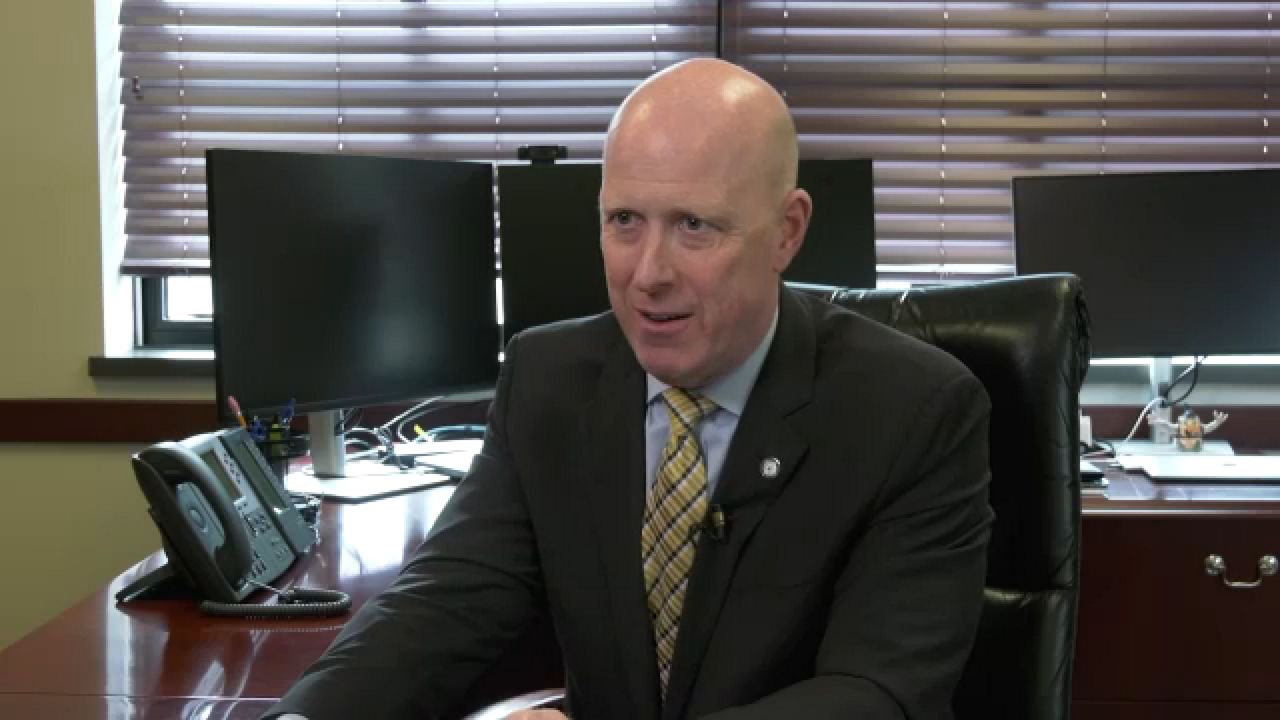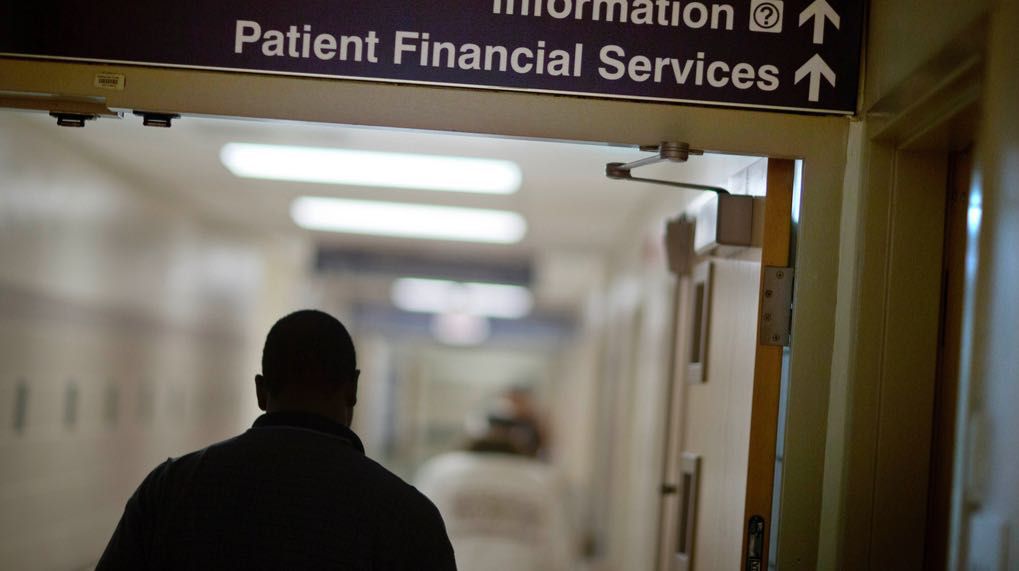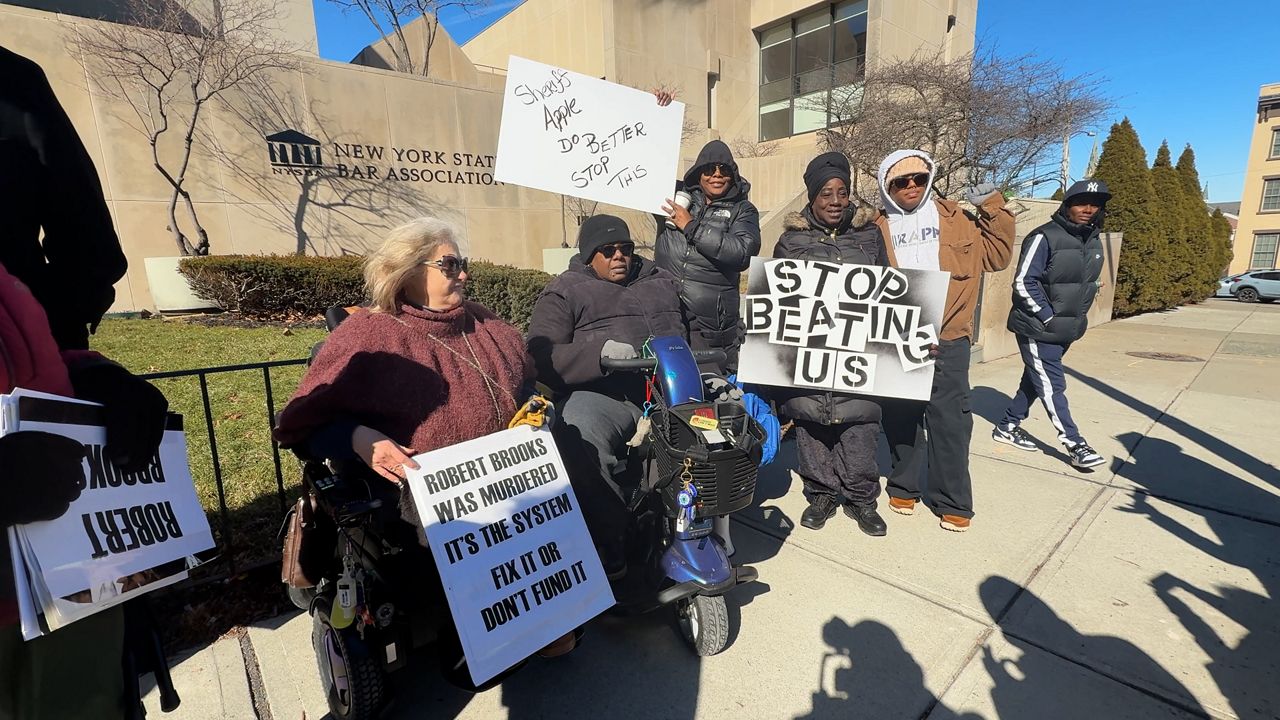Less than a third of the money allocated to combat gun violence has been distributed after three months.
On July 6, former Gov. Andrew Cuomo declared a first in the nation state of emergency around gun violence, after a wave of shootings spiked across the state.
Between Cuomo and Gov. Kathy Hochul, the amount now allocated to combat gun violence totals almost $159 million.
However, to date, only $47 million has been distributed so far.
Rebecca Fischer with New Yorkers Against Gun Violence helps run a yearlong education program in schools that are disproportionately affected by gun violence, called reACTION.
Fischer says they applied for funding almost immediately, but were just told they will not find out if they will even receive this money until mid-October.
“We were told this is an emergency and an emergency order and this is not intended to be a long protracted process in terms of budget bureaucracy,” Fischer said. “You're supposed to get the money right away.”
The executive order also directed police agencies to report data on gun violence weekly to a new agency called the Office of Gun Violence Prevention with the Department of Health.
The goal is for the office to use this data to “track emerging gun violence hotspots and deploy resources to those areas that need it most.”
Yet three months later, the Office of Gun Violence Prevention still does not exist.
Gov. Hochul’s team says they are working to set it up, but did not give a timeframe on when even a website would be up.
Assemblywoman Pat Fahy says the program was slightly derailed when former Gov. Cuomo resigned from office following sexual harassment allegations.
“We still have work to do,” Assemblywoman Fahy said. “So should we have done more? Sure. Do we still have more ahead? We do and we need to get ready for that.”
Shooting statistics are shared monthly by police agencies and have been for the past decade.
But the Hochul administration says they will not be releasing the weekly data they say they have been collecting for past three months, which is part of this new initiative.
A spokesperson told Spectrum News 1 that releasing this weekly data could “impede ongoing police investigations,” but declined to say how releasing the monthly data was different.
When asked where there are emerging hot spots this weekly data is supposed to track, they once again referred back to the same monthly data chart.
The Hochul administration declined to specify if there are any new areas they are targeting and what specific resources have been deployed to target gun violence, besides saying generally that additional funds have been distributed to already existing programs on the ground.
The Hochul administration also did not answer if there are police departments struggling to comply with handing over this data on shootings weekly.
Fischer says having up-to-date information on shootings can help programs like theirs target the root causes of gun violence.
“Community violence programs really need to be able to have the same information that police have so instead of coming in after a crime is committed, they can be there to prevent it and intervene before a crisis occurs,” Fischer said.
The money that has been distributed so far has gone to important programs that provide jobs for at-risk youth and counseling for individuals who have experienced gun violence.
The Hochul administration says the $47 million has also been used to partner with the Office of Children and Family Services, state agencies and local officials to fund “afterschool and weekend sports, arts, civic engagement, skill development, and recreational programs in communities” seeing high rates of gun violence.
Additionally, a spokesperson says the New York State Division of Criminal Justice Services and the Office of Victim Services are working with SNUG outreach teams and Gun Involved Violence Elimination (GIVE) initiatives in order to coordinate gun violence intervention and prevention strategies.
But Fischer says there is an urgent need to address the rise in gun violence seen across the state, which is why the state of emergency declaration was so critical.
“The governor's office really needs to treat this issue as a public health emergency in the same way that COVID relief is distributed,” Fischer said. “The money needs to go out and needs to go out as soon as possible.”
Hochul extended the gun violence state of emergency until Oct. 23 and is expected to extend it again after that.
"Governor Hochul is committed to transparency and has directed DCJS to work with DOH to determine how to disclose this data to the public as part of their transparency plans,” the Governor’s Office said in a statement.
Below is how the Hochul administration say they “intend” to spend the $158.7 million:
$95.7 million: Summer Jobs and Community Activities for youth, including:
- $61.2 million summer youth employment investment, including $10 million targeted for summer jobs in gun violence hot-spots and $5.7 million for summer youth activities in hot-spots)
- Spending to date: $46.9 million
- $18.5 million State Department of Labor workforce development funds directed to Consortium for Worker Education for job training, training stipends, and job placement
- $16 million State Department of Labor partnership with local workforce development boards using workforce development funds
$50.5 million: Targeted anti-gun and crime initiatives and the creation of the new Office of Gun Violence Prevention
- $47.2 million targeted anti-gun initiatives and supports, including the Gun Involved Violence Initiative (GIVE), additional SNUG funding, and police reform initiatives
- $3.3 million to support Crime Analysis Centers and the New Office of Gun Violence Prevention (adds $250,000 from original announcement for gun tracing analysis at the crime center)
$10 million, Violence interventions:
- Newly deployed SNUG funding expanding street outreach programs and expanding existing and adding new hospital-based programs
- This includes the $2 million DCJS awarded to 20 programs to hire 39 additional street outreach workers / violence interrupters to work in the community: 21 new outreach workers among the 12 SNUG programs supported by DCJS and the state Office of Victim Services and 18 new violence interrupters for six organizations in New York City that operate those programs. This was announced on 9/14
$2.5 million: New funds for the State Police Gun Trafficking Interdiction Unit









